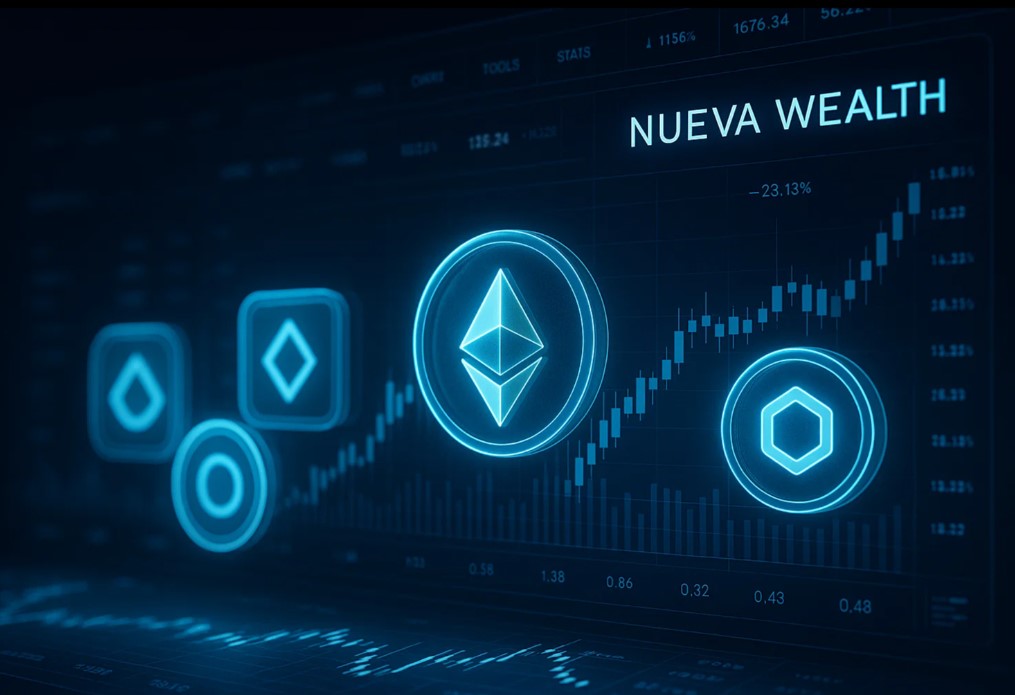ZcashLive Feed
Zcash breaking news and instant alerts. Crypto Feed's minimalist interface delivers verified headlines, price movements, and protocol updates the moment they happen. Fast, focused, no fluff.
 Polygon CTO Vs. Zcash: Clash Erupts Over 21 Million Coin Integrity
Polygon CTO Vs. Zcash: Clash Erupts Over 21 Million Coin IntegrityAn exchange on X between Polygon’s CTO Mudit Gupta and Zcash founder Zooko Wilcox reignited a long-simmering debate over whether privacy-preserving shielded pools can be perfectly audited — and, by extension, whether ZEC’s 21 million cap can be trusted under all conceivable failure modes. The dispute hinged on a familiar fault line in privacy-coin design: zero-knowledge protocols can obfuscate individual balances and flows, but they still must preserve a hard monetary base. Polygon CTO Attacks Zcash Gupta opened with a stark framing: “Nobody knows how many Zcash tokens actually exist. Shielded assets like Zcash are hard to audit. In March 2019, an infinite mint bug was detected in Zcash shielded assets. It was fixed in October 2019 but there is no guaranteed way to tell if the bug was ever exploited.” Nobody knows how many zcash tokens actually exist. Shielded assets like zcash are hard to audit. In March 2019, an infinite mint bug was detected in zcash shielded assets. It was fixed in October 2019 but there is no guaranteed way to tell if the bug was ever exploited. — Mudit Gupta (@Mudit__Gupta) October 26, 2025 He later softened the immediate risk assessment — “Based on heuristic, it’s unlikely the bug was exploited so no reason to panic” — while stressing what he called an enduring category risk: “I’m just highlighting an attack vector with Zcash and similar privacy pools… I’m not claiming any bug was exploited, just mentioning the possibility and risk.” Wilcox pushed back, calling the initial post “not accurate,” and pointed Gupta to “publicly-verifiable on-chain audits” that track the monetary base. “They show the integrity of the Zcash monetary base. A straightforward game-theoretic analysis further shows zero counterfeiting,” he wrote, linking to community dashboards and documentation. In a follow-on, Wilcox encapsulated the ZEC position with a thought experiment about the legacy Sprout pool: “Suppose someone counterfeited ZEC in the Sprout pool before October 28, 2018. Then there is a ‘race to the exits’ between the counterfeiter and his victims. Whoever moves their ZEC out of the Sprout pool first gets to keep all the money. Conclusion: there was no counterfeiting.” He added that “even if there was counterfeiting… there would still be only 16,355,911 ZEC in existence, and still only 21 M ever. Thanks, turnstiles!” Stripped to its essentials, the technical disagreement is less about Zcash’s intended monetary policy and more about the edge-case guarantees when privacy meets auditability. Zcash’s published economics mirror Bitcoin’s: a fixed 21 million upper bound and a halving-style issuance schedule. That cap is unambiguous in official materials. The Backstory The controversy traces back to the counterfeiting vulnerability affecting ZEC’s earliest shielded pool, Sprout. According to the Electric Coin Company (ECC) and the Zcash Foundation, the flaw was discovered privately in 2018 and publicly disclosed on February 5, 2019; critically, the Sapling upgrade that activated on October 28, 2018 removed the vulnerable construction, and Zcash introduced “turnstile” accounting to constrain exits from shielded pools to, at most, the amount verifiably entered. ECC reported at disclosure that it had seen “no evidence that counterfeiting has occurred,” a stance it has reiterated, and it described turnstile enforcement as a defense to preserve the monetary base even under hypothetical counterfeiting. This is the heart of Wilcox’s argument. Because ZEC can only enter or leave a shielded pool via transfers that reveal values at the boundary, the chain can compute an expected pool balance. If more value tries to exit than has ever entered, the discrepancy becomes observable at the turnstile. The “race to the exits” intuition — while informal — captures the idea that any attacker who minted bogus ZEC inside Sprout would be competing against legitimate holders to withdraw before the turnstile constraint bites; absent an unexplained drain to zero or a negative reconciliation, long-lived counterfeiting is inconsistent with observed pool totals. Zcash’s documentation describes these value-pool turnstiles and their role in monitoring pool integrity, and community discussions dating back years have treated them as the canonical mitigation. Gupta’s rejoinder is about epistemic certainty, not policy intent. “Perhaps I should have been clearer,” he wrote. “Due to [the] possibility of bugs, there’s no guarantee that the shielded pools have the same amount of Zcash circulating inside them as transparent Zcash that went in. Therefore, you can’t be 100% sure of the actual total supply… [though] the likelihood of a bug like this being exploited is essentially 0.” At press time, ZEC traded at $325.
 Zcash’s social hype isn’t fading, but ZEC’s price is – Why?
Zcash’s social hype isn’t fading, but ZEC’s price is – Why?Is ZEC's momentum fading, or is this just a pause from a bullish continuation?
 Morning Crypto Report: $1 Billion XRP Secured, Litecoin Price Spikes Ahead of ETF Launch, Zcash (ZEC) Overbought: Warning
Morning Crypto Report: $1 Billion XRP Secured, Litecoin Price Spikes Ahead of ETF Launch, Zcash (ZEC) Overbought: WarningThe Tuesday trading session on the crypto market is headlined by Ripple-backed Evernorth crossing $1 billion in XRP, the Litecoin price spiking before its ETF debut and Zcash showing overheated retail signals one should not ignore.
 ZEC ‘Bubble’ Bigger Than 2021, CryptoQuant Data Shows
ZEC ‘Bubble’ Bigger Than 2021, CryptoQuant Data ShowsZcash (ZEC) is signaling a bubble phase, with current trade volume exceeding 2021 highs, CryptoQuant reports. The analyst warns new retail buyers may face a sharp correction. The post ZEC ‘Bubble’ Bigger Than 2021, CryptoQuant Data Shows appeared first...
 NuevaWealth for Altcoin CFD Trading – Pros, Cons & Tips
NuevaWealth for Altcoin CFD Trading – Pros, Cons & TipsIntroduction to Altcoin Trading Altcoins are any cryptocurrencies besides Bitcoin. Over the past decade the crypto ecosystem has exploded from a handful of coins to thousands, each trying to solve a specific problem—whether it’s enabling smart contracts (Ethereum), providing fast, low‑fee payments (Solana, Litecoin), powering decentralized finance (Uniswap, Aave), supporting NFTs and gaming (Axie Infinity, Decentraland), or offering privacy (Monero, Zcash). Because many of these projects are still early in their development cycles, their market prices tend to be more volatile than Bitcoin. That volatility creates opportunities for traders who can correctly anticipate short‑term price moves, but it also brings heightened risk of rapid losses. Key concepts to grasp before diving in: Market Capitalization & Liquidity – Larger caps (top 20) usually have tighter spreads and deeper order books, making it easier to enter and exit positions without slippage. Smaller caps can move dramatically on modest trade volumes, which can be attractive for speculative gains but also risky. Tokenomics – Understand the supply model (fixed vs. inflationary), distribution schedule (vesting, staking rewards) and utility of the token. Sudden token releases or protocol upgrades often trigger price spikes or drops. Fundamental Drivers – Project roadmaps, partnership announcements, regulatory news, and community sentiment (Twitter, Reddit, Discord) heavily influence altcoin price dynamics. Technical Analysis Basics – Trend lines, support/resistance zones, moving averages, RSI and MACD are commonly applied to altcoin charts. Given the higher noise, combining several indicators and confirming with volume can improve signal reliability. Risk Management – Set stop‑loss levels, limit leverage, and allocate only a small portion of your portfolio to any single altcoin. Diversification across several projects can smooth out the impact of a single coin’s failure. Regulatory Landscape – Some jurisdictions treat certain altcoins as securities, which can affect exchange listings and legal exposure. Stay informed about the regulatory status of the tokens you trade. By mastering these fundamentals—understanding what each altcoin aims to achieve, how its market behaves, and how to protect capital—you’ll be better equipped to navigate the fast‑paced world of altcoin trading. 1. Why Altcoins Matter Altcoins—cryptocurrencies other than Bitcoin—represent the bulk of the crypto ecosystem. They range from established projects like Ethereum, Solana and Cardano to newer tokens that aim to solve niche problems such as decentralized finance, gaming, or supply‑chain tracking. For many traders, altcoins offer higher volatility than Bitcoin, which can translate into larger short‑term price swings and, consequently, bigger profit opportunities—provided the trader understands the added risk. 2. How Nueva Wealth Handles Altcoins Nueva Wealth treats every cryptocurrency it lists as a CFD (contract‑for‑difference). When you open an altcoin position, you are not buying the token itself; you are speculating on its price movement relative to a fiat or stablecoin denominator. The platform currently offers a curated selection of altcoins, typically the top‑20 by market capitalization, plus a few emerging projects that meet its internal liquidity standards. Key characteristics of the altcoin CFD offering: Fixed spreads – The bid‑ask spread is set in advance and does not change with order size. During periods of extreme market stress, the spread may widen, which can affect entry and exit prices. Leverage options – Most altcoins are available with up to 1:10 leverage. This means a $100 margin can control a $1,000 notional position, magnifying both gains and losses. No token custody – Because the contracts are settled in fiat or a stablecoin, you never receive the underlying altcoin in a wallet. This eliminates concerns about private‑key management but also means you cannot use the token for staking, governance voting, or other on‑chain utilities. Overnight financing – Holding a leveraged altcoin position past the daily settlement window incurs a financing charge calculated on the notional value of the contract. 3. Advantages for Altcoin Traders Speed of Execution – Order latency is measured in sub‑seconds, which is valuable when trading fast‑moving altcoins where price changes can happen in milliseconds. Unified Dashboard – Altcoins sit alongside forex, stocks and commodities, allowing you to shift capital between asset classes without leaving the app. Risk Management Tools – Stop‑loss and trailing‑stop orders are available for each altcoin CFD, giving you a way to limit downside exposure. No Custodial Hassles – Since you never hold the actual token, you avoid the complexities of securing private keys, managing wallets, or dealing with network congestion when transferring coins. 4. Limitations and Risks Lack of Ownership – Without holding the real token, you cannot benefit from airdrops, staking rewards, or governance participation that many altcoin projects offer. Leverage‑Induced Volatility – Altcoins already exhibit high price swings; adding leverage can quickly erode a margin balance if the market moves against you. Liquidity Constraints – While Nueva Wealth selects altcoins with sufficient liquidity, the CFD market depth can be thinner than the spot market on major exchanges. Slippage may occur on large orders. Regulatory Ambiguity – Operating under an offshore licence, the platform does not fall under EU or UK investor‑protection regimes. In the event of insolvency, there is no statutory compensation for deposited funds. Limited Educational Content – The platform’s built‑in learning resources cover basic CFD concepts but do not delve deeply into altcoin fundamentals, tokenomics, or project‑specific risk factors. Traders need to conduct independent research. 5. Practical Tips for Using Nueva Wealth with Altcoins Start Small – Allocate only a modest portion of your capital (e.g., ≤ 10 %) to leveraged altcoin positions until you become comfortable with the platform’s execution and fee structure. Set Protective Stops – Use stop‑loss orders at a level that reflects the altcoin’s typical volatility; consider a trailing‑stop to lock in gains if the price moves favorably. Monitor Financing Costs – If you plan to hold a position overnight, calculate the daily financing charge and factor it into your profitability analysis. Cross‑Check Liquidity – Before entering a sizable trade, compare the quoted spread on Nueva Wealth with spot market spreads on major exchanges (e.g., Binance, Coinbase). A significantly wider spread may indicate lower CFD liquidity. Do Independent Research – Review the altcoin’s whitepaper, roadmap, developer activity, and community sentiment. CFD exposure does not replace the need for fundamental analysis. 6. Frequently Asked Questions Specific to Altcoins Do I earn staking rewards on altcoins traded through Nueva Wealth?No. Because the contracts are settled in fiat or stablecoins, you do not hold the actual token and therefore cannot participate in staking or delegation programs. Can I trade any altcoin I want?Only the altcoins that Nueva Wealth lists are available as CFDs. The selection is limited to assets that meet the platform’s liquidity and compliance criteria. What happens if an altcoin gets delisted on the spot market?If the underlying token is removed from major exchanges, Nueva Wealth may suspend CFD trading for that asset. Existing positions could be closed automatically, and any resulting profit or loss would be settled in fiat. Are there any tax implications specific to CFD altcoin trading?Tax treatment varies by jurisdiction. Generally, CFD profits are considered capital gains or income, depending on local law. Because you never own the token, you do not report a “crypto acquisition” event, but you do need to declare realized gains or losses from CFD closures. Consult a tax professional for guidance. 7. Verdict – Is Nueva Wealth Good for Altcoin Trading? Nueva Wealth offers a fast, mobile‑friendly environment that makes it easy to speculate on a curated list of altcoins. Its strengths lie in rapid order execution, built‑in risk‑management tools and the convenience of handling multiple asset classes from a single interface. For experienced traders who are comfortable with leveraged speculation, understand the risks of CFD products, and are primarily interested in short‑term price movements, Nueva Wealth can be a suitable venue for altcoin exposure. For newcomers or those who wish to hold altcoins long‑term, earn staking rewards, or rely on regulatory protections, a traditional spot exchange or a regulated broker that offers direct token custody may be a better fit. Ultimately, the decision hinges on your trading objectives, risk tolerance, and willingness to supplement the platform’s limited educational content with independent research. If you choose to proceed, start with a small allocation, use protective stops, and keep a close eye on financing costs and liquidity conditions.
 BTC ALMOST $120K, CRYPTO IS GREEN, PNKSTR JUMPS 50% TO $140M
BTC ALMOST $120K, CRYPTO IS GREEN, PNKSTR JUMPS 50% TO $140MCrypto majors see more green; Bitcoin at $118,800. ZCash continues to lead, soaring 50% to $140. US government shutdown pauses ETF approvals. Lighter leaves private beta, opens Perps platform to public. Polymarket eyes US return as soon as today. PNKSTR jumps 50% to $140M as other NFT Strategies boom. Crypto majors are green again continuing the shutdown rally; BTC +2% at $118,800, ETH +2% at $4,380, XRP +1% at $2.99, SOL +4% at $225. ZEC (+50%), DEXE (+30%) and SPX (+17%) led top movers. Zcash rocketed ~63% to a three-year high, as traders (and Naval) pitch privacy coin as “insurance” hedge during Bitcoin strength. BTC ETFs saw another $675.8M in net inflows, now over $1.6B on the week so far. MSTR stock jumped 5% yesterday after Strategy avoided a multi-billion AMT (tax) hit after new IRS/Treasury guidance, easing concerns over taxes on unrealized gains tied to its Bitcoin holdings. Polymarket is poised to relaunch for U.S. users within days, as filings show self-certified contracts after acquiring a CFTC-licensed venue. Circle introduced a new tokenized US Treasury fund USYC on Solana. The UK government seeks to keep most of $7B in Bitcoin it just seized linked to massive Chinese fraud. The White House withdrew Brian Quintenz for CFTC chair, reopening leadership questions at the derivatives regulator amid active crypto agenda. New York is running a pilot to give low income residents $12,000 in USDC to help alleviate poverty, with funding provided by Coinbase. VisionSys AI is partnering with Marinade Finance to launch a SOL TreasuryCo, aiming to acquire $500M in SOL over the next 6 months (and stake it) with larger goals to accumulate up to $2B. The US government shut down has halted the ETF approval process, diminishing hopes of any early October approvals (i.e. for SOL.
